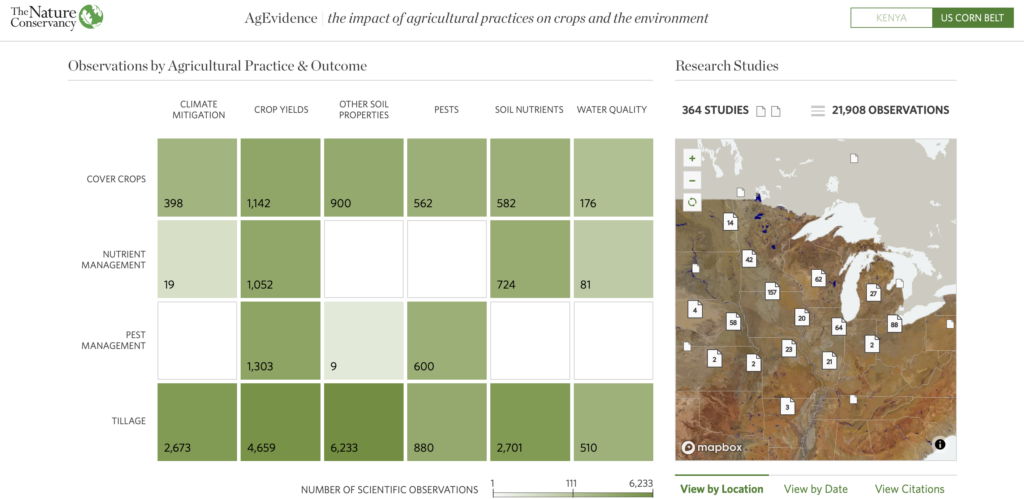![]()
Questions that this tool can answer:
- What are the potential costs and benefits of adopting regenerative agricultural management practices?
- What is the latest science around the impact agricultural practices have on the environment?
- What studies have been undertaken in my state or region?
AgEvidence is a database of nearly 300 peer-reviewed research papers from 1980 through present day, with more than 22,000 data points. The tool shows how agricultural management can impact both the environment and the production of food. It provides easy access to this research without having to comb through scientific papers. For users looking for quick answers to important questions, AgEvidence offers curated insights that use the data to answer a multitude of questions about the relationship between conservation agriculture practices and impacts to the environment. For instance, “Which practices best improve water quality?” or “What are the impacts of common cover crop use?” Visualization analytics enable users to easily navigate and interpret the data. Users seeking to go beyond the curated insights can create their own, in-depth custom views of the data.
AgEvidence enables anyone—with or without a science background—to assess the impact of conservation agriculture in the US Corn Belt. This can help decision-makers prioritize which practices to promote through their efforts. Users who want to dig through the data can freely download the data from the AgEvidence database for more detailed analysis.
The AgEvidence website also includes short articles that provide easy to understand summaries of key topics relating to agriculture and climate, including “Which agricultural practices reduce greenhouse gases” and “What is the impact of common cover crop use?” The articles highlight the benefits of various agricultural practice, challenges and uncertainties, and areas where more research is needed to answer key questions.
The AgEvidence database was compiled as part of the Managing Soil Carbon working group of the Science for Nature and People Partnership, which is a partnership of The Nature Conservancy (TNC), Wildlife Conservation Society, and the National Center for Ecological Analysis and Synthesis at the University of California, Santa Barbara. Lesley W. Atwood, Ph.D., the postdoctoral scholar with the working group, developed the database.
Additional Resources
- This video provides guidance on how to use AgEvidence.
- This blog article provides a high-level summary of what information the AgEvidence tool does and how it was developed.
- This podcast featuring Dr. Stephen Wood provides further insight on how to access and explore the data in the AgEvidence tool.

